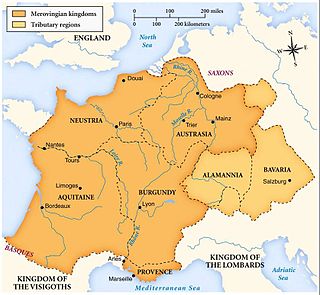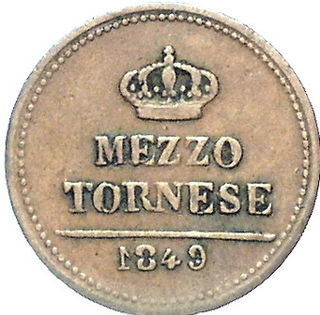 W
WThe history of the Italian peninsula during the medieval period can be roughly defined as the time between the collapse of the Western Roman Empire and the Italian Renaissance.
 W
WThe Cavalieri Addobbati, also known as Cavalieri di Corredo, were the elite among Italian knights in the Middle Ages. The two names are derived from addobbo, the old name for decoration, and corredo, meaning equipment. These were knights who could afford elaborate clothes, armor and equipment for themselves, their charger and their palfrey.
 W
WCondottieri were Italian captains in command of mercenary companies during the Middle Ages and multinational armies during the early modern period. They notably served European monarchs and Popes during the Italian Wars of the Renaissance and the European Wars of Religion. Notable condottieri include Prospero Colonna, Giovanni dalle Bande Nere, Cesare Borgia, the Marquis of Pescara, Andrea Doria, and the Duke of Parma.
 W
WThe history of Corsica in the medieval period begins with the collapse of the Western Roman Empire and the invasions of various Germanic peoples in the fifth century AD, and ends with the complete subjection of the island to the authority of the Bank of San Giorgio in 1511.
 W
WThe field warden was an urban official operating at least from the twelfth century onward across the Italian peninsula. Working alongside other officials, he acted as a rural policing agent on behalf of the region’s growing cities. As such, he is to be distinguished from the field guard or rural custodian, also commonly referred to as a camparius or camparo, who was generally employed in private service by a landlord, including rural or urban monasteries.
 W
WThe Muslim settlement of Lucera was the result of the decision of Holy Roman Emperor Frederick II of the Hohenstaufen dynasty (1194–1250) to move 20,000 Sicilian Muslims to Lucera, a settlement in Apulia in southern Italy. The settlement thrived for about 75 years. In 1300, it was sacked by the Christian forces of Charles II of Naples and its Muslim inhabitants were exiled or sold into slavery.
 W
WThe Kingdom of Sicily was a state that existed in the south of the Italian peninsula and for a time the region of Ifriqiya from its founding by Roger II of Sicily in 1130 until 1816. It was a successor state of the County of Sicily, which had been founded in 1071 during the Norman conquest of the southern peninsula. The island was divided into three regions: Val di Mazara, Val Demone and Val di Noto; val being the apocopic form of the word vallo, derived from the Arabic word wilāya.
 W
WThe Laudario di Cortona is a musical codex from the second half of the 13th Century containing a collection of laude.
 W
WA maona or Societas comperarum was a medieval Italian association of investors formed to manage the purchased shares of the revenue due to the relevant city-state through tax farming; the shares were individually sold to wealthy merchants, but the collection could be difficult and so these merchants would band together.
 W
WThe Merovingian dynasty was the ruling family of the Franks from the middle of the 5th century until 751. They first appear as "Kings of the Franks" in the Roman army of northern Gaul. By 509 they had united all the Franks and northern Gaulish Romans under their rule. They conquered most of Gaul, defeating the Visigoths (507) and the Burgundians (534), and also extended their rule into Raetia (537). In Germania, the Alemanni, Bavarii and Saxons accepted their lordship. The Merovingian realm was the largest and most powerful of the states of western Europe following the breaking up of the empire of Theoderic the Great.
 W
WThe Merovingian dynasty was the ruling family of the Franks from the middle of the 5th century until 751. They first appear as "Kings of the Franks" in the Roman army of northern Gaul. By 509 they had united all the Franks and northern Gaulish Romans under their rule. They conquered most of Gaul, defeating the Visigoths (507) and the Burgundians (534), and also extended their rule into Raetia (537). In Germania, the Alemanni, Bavarii and Saxons accepted their lordship. The Merovingian realm was the largest and most powerful of the states of western Europe following the breaking up of the empire of Theoderic the Great.
 W
WThe Republic of Lucca was a historic state of Italy, which lasted from 1160 to 1805 on the central Italian peninsula.
 W
WThe Principality of Taranto was a state in southern Italy created in 1088 for Bohemond I, eldest son of Robert Guiscard, as part of the peace between him and his younger brother Roger Borsa after a dispute over the succession to the Duchy of Apulia.
 W
WThe Terra Sancti Benedicti was the secular territory, or seignory, of the powerful Abbey of Montecassino, the chief monastery of the Mezzogiorno and one of the first Western monasteries: founded by Benedict of Nursia himself, hence the name of its possessions. It lasted from the 8th to the 19th century.
 W
WThe tornesel, tornesol, or tornese was a silver coin of Europe in the late Middle Ages and the early modern era. It took its name from the denier tournois, the denier of Tours. Marco Polo referred to the tornesel in recounts of his travels to East Asia when describing the currencies of the Yuan Empire. His descriptions were based on the conversion of 1 bezant = 20 groats = 133+1/3 tornesel.
 W
WThe Trecento refers to the 14th century in Italian cultural history.
 W
WThe Guelphs and Ghibellines were factions supporting the Pope and the Holy Roman Emperor, respectively, in the Italian city-states of central and northern Italy. During the 12th and 13th centuries, rivalry between these two parties formed a particularly important aspect of the internal politics of medieval Italy. The struggle for power between the Papacy and the Holy Roman Empire arose with the Investiture Controversy, which began in 1075, and ended with the Concordat of Worms in 1122. The division between the Guelphs and Ghibellines in Italy, fuelled by the imperial Great Interregnum, persisted until the 15th century.
 W
WThe history or legend of the witches of Benevento is folklore dating from at least the 13th century. Its dissemination is one reason for the fame of this Samnite city. The popular belief—that Benevento would be the Italian witches' gathering place—has abundant implications, blurring the border between reality and imagination. Various writers, musicians, and artists have drawn inspiration from or referred to it.